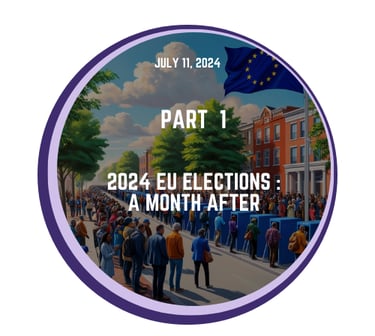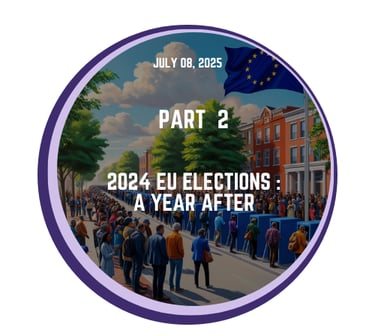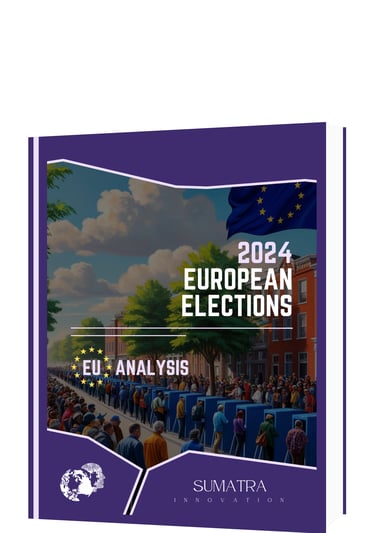What can we learn from the 2024 European elections?




Between 6 and 9 June 2024, we, European citizens, voted for the new 720 Members of the European Parliament (MEPs), 15 more than in 2019. This presented the opportunity to reshape European dynamics by electing members who share our ideas, work on our priorities, and address our concerns. Five years after the 2019 elections, the European Union (EU) finds itself in a difficult situation. After having had to cope with Brexit, the EU had to handle the COVID-19 pandemic, protect the principles of the rule of law and democratic values that have been undermined by the actions of certain Member States such as Poland or Hungary, face corruption scandals like Qatargate, compromising transparency and trust, manage migration, deal with the climate crisis, and recover from the economic and energy crises caused by the conflict between Russia and Ukraine.
These difficult years, during which the EU has had its ups and downs, have revealed certain weaknesses and inconsistencies. Social disparities and economic uncertainties persist in many EU countries, while migration remains a hot and controversial topic. Although the implementation of the Green Deal has slowed down and is encountering resistance from many crucial players, the EU is working on a Green Deal 2.0. Economic relations with China are fragile and the EU is working to remedy its dependence in strategic sectors. The rise of populist and nationalist parties in the European Union is also contributing to tensions within the EU and calling into question its legitimacy and unity. It is in this complex geopolitical landscape that the European elections took place last June, highlighting their importance for the future of the European Union and its member states.
The objective of this article is to understand the results of the 2024 European elections. With the Right coming out as the winner, many questions and concerns are being raised. What consequences will a right-oriented European Parliament (EP) have on migration and climate change policies? How will it influence the European vision for enlargement, as well as EU’s cohesion and integration efforts? How will the trade relations with China and the US evolve? Will this be a turning point for the EU’s position regarding the Russia-Ukraine conflict? Is there a risk of political instability and polarization within member states? However, it is too early to try answering such questions, which would only produce speculations. The aim is therefore to provide an overview of the election results, analyze potential implications based on current political trends, and help readers understand possible future directions for the European Union. Firstly, this article explains the system of proportional representation in the EP, in order to understand the election mechanism and the relationship between national political parties and European political groups. Next, the results of the elections will be presented and then used to understand the implications of this shift of power. Finally, the main points of contention within the political sphere will be discussed, as well as the next important dates for the future of the European Union.



Executive Summary


The 2024 European elections occurred against a backdrop of complex crises, from Brexit and COVID-19 to war in Ukraine, climate resistance, and rising populism, making this election pivotal for the EU’s political direction.
Voter turnout showed slight overall growth, with notable increases in Central and Eastern Europe. The legal voting age was lowered to 16 in four countries, which may have encouraged youth participation.
The Right emerged stronger, with gains for the European People’s Party (EPP), the Conservatives and Reformists (ECR), and Identity and Democracy (ID), but also through a historic realignment: the new “Patriots for Europe” (PfE) and “Europe of Sovereign Nations” (ESN) blocs, which now occupy the third and fourth largest groupings, reshaping coalition arithmetic from dossier to dossier and making alliances more volatile.
The Greens and Renew Europe lost significant ground, weakening traditional centrist majorities.
The shift rightward already reshape coalition dynamics and policymaking, as centre-right and far-right forces team up to recalibrate climate deadlines, reframe defence issues, and prioritise migration policies.
However, the existing centrist majority (EPP, S&D, Renew, Greens) could still hold together to counterbalance extremes.
Talks of creating a far-right supergroup remain speculative due to deep ideological divides. Nationalist parties may struggle to form effective coalitions despite electoral strength.
Ursula von der Leyen is poised for a second term as Commission President but must navigate delicate alliances. Her success will depend on backing from centrists and the Greens, while avoiding alignment with right figures like Meloni.
The Council of the EU may shift as right-wing parties gain ground in national governments. Hungary’s Council Presidency, led by Viktor Orbán, could steer policy discussions in a more conservative direction.
These elections mark a turning point in EU politics. While the far-right gained influence, it remains fragmented in nature, which may limit its impact. The coming months will test the EU’s capacity to preserve cohesion, implement key policies (from strategic autonomy to the Clean Industrial Deal), and uphold democratic norms in an increasingly polarised environment.






